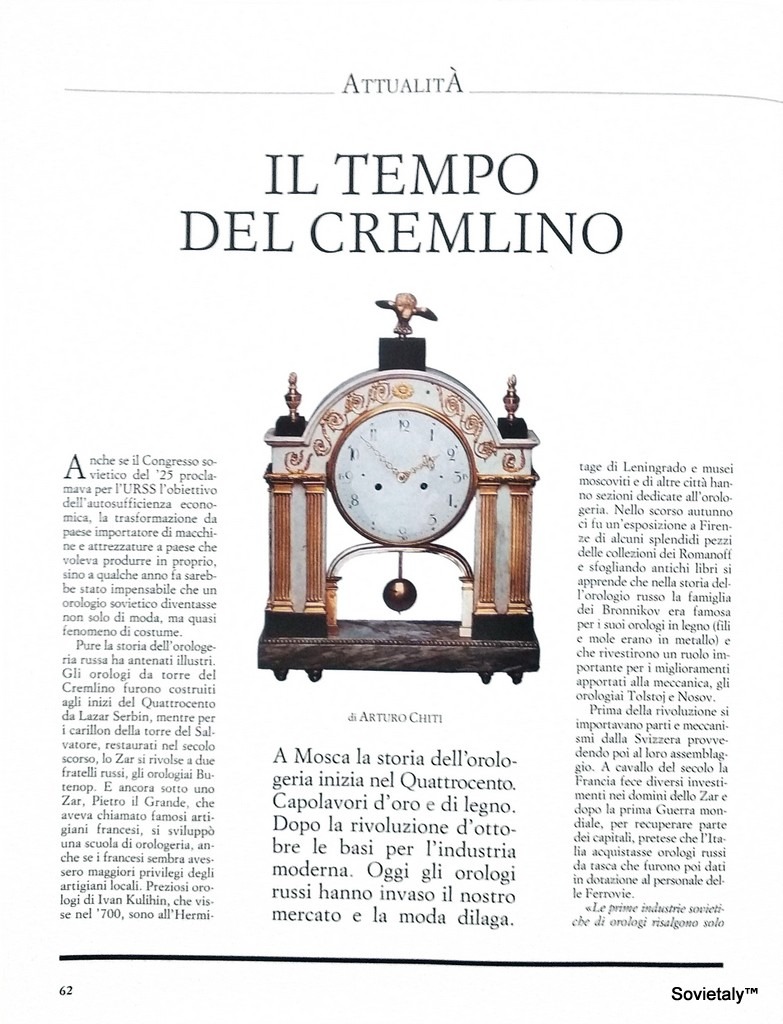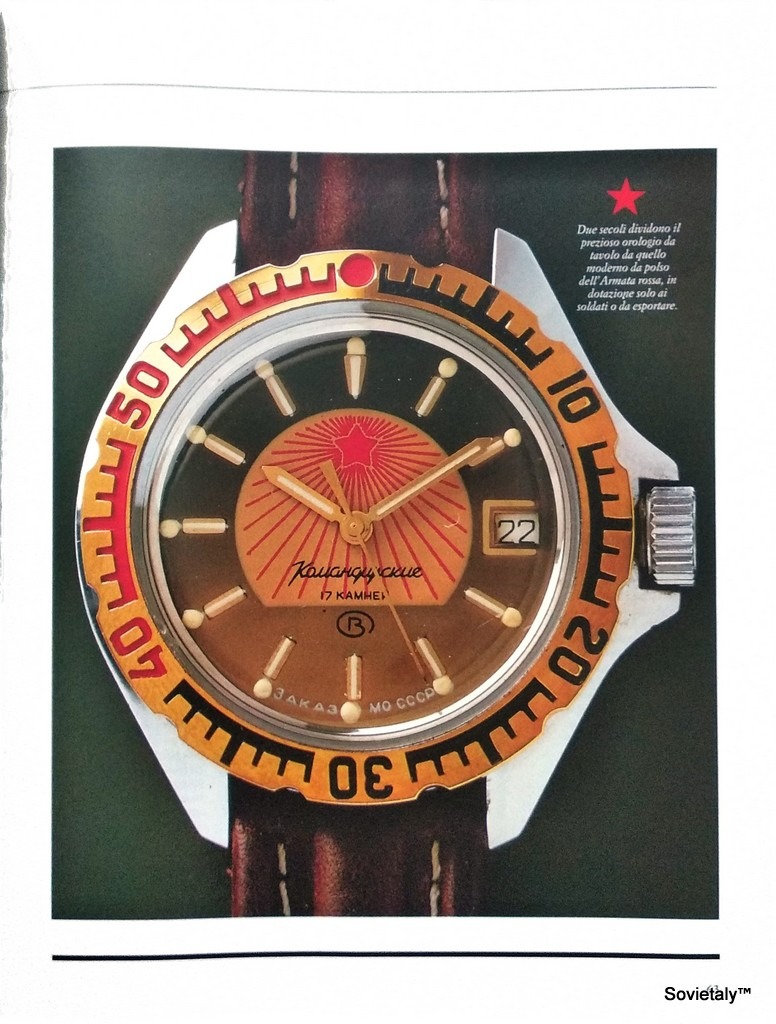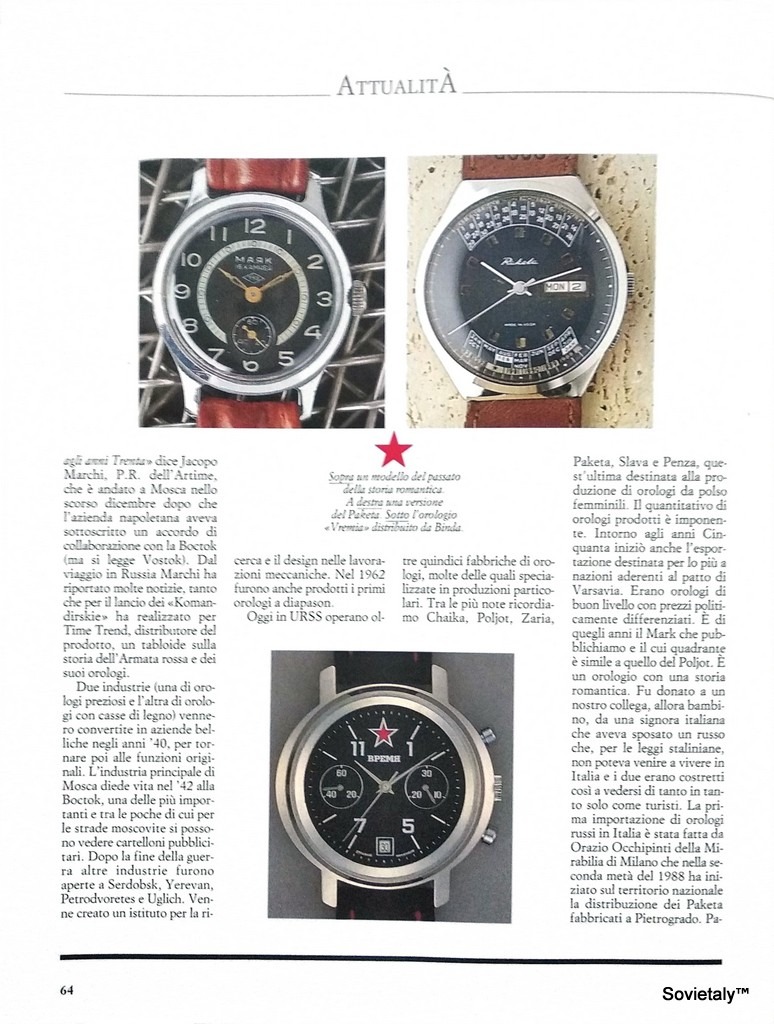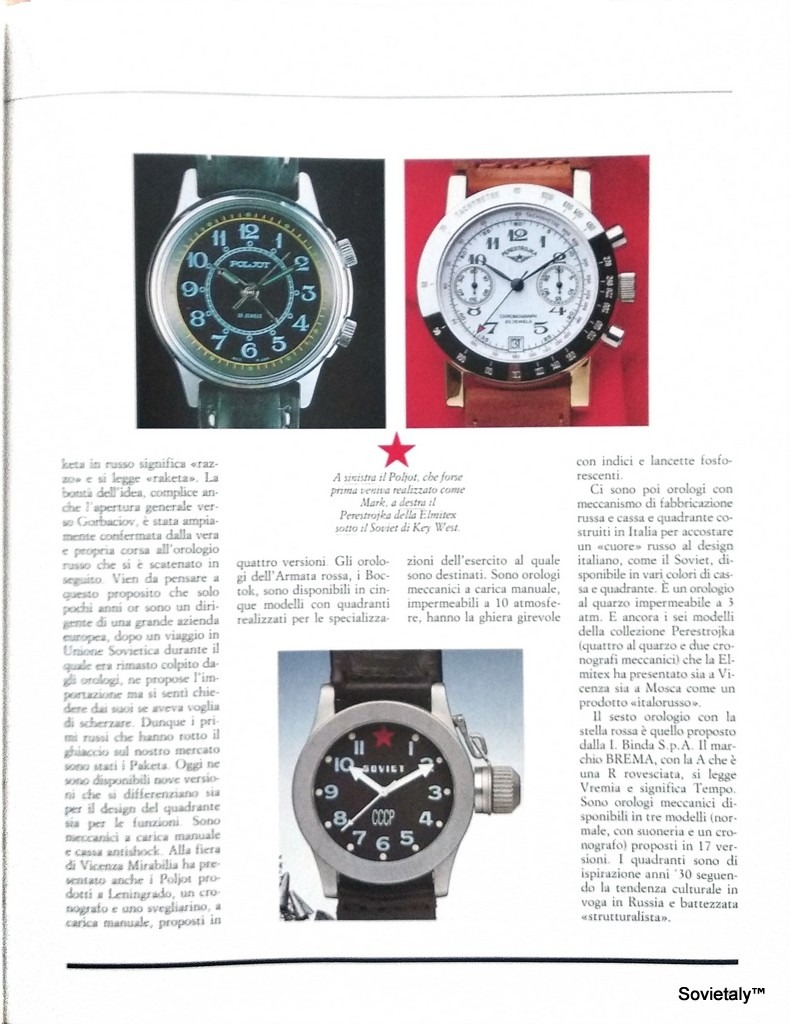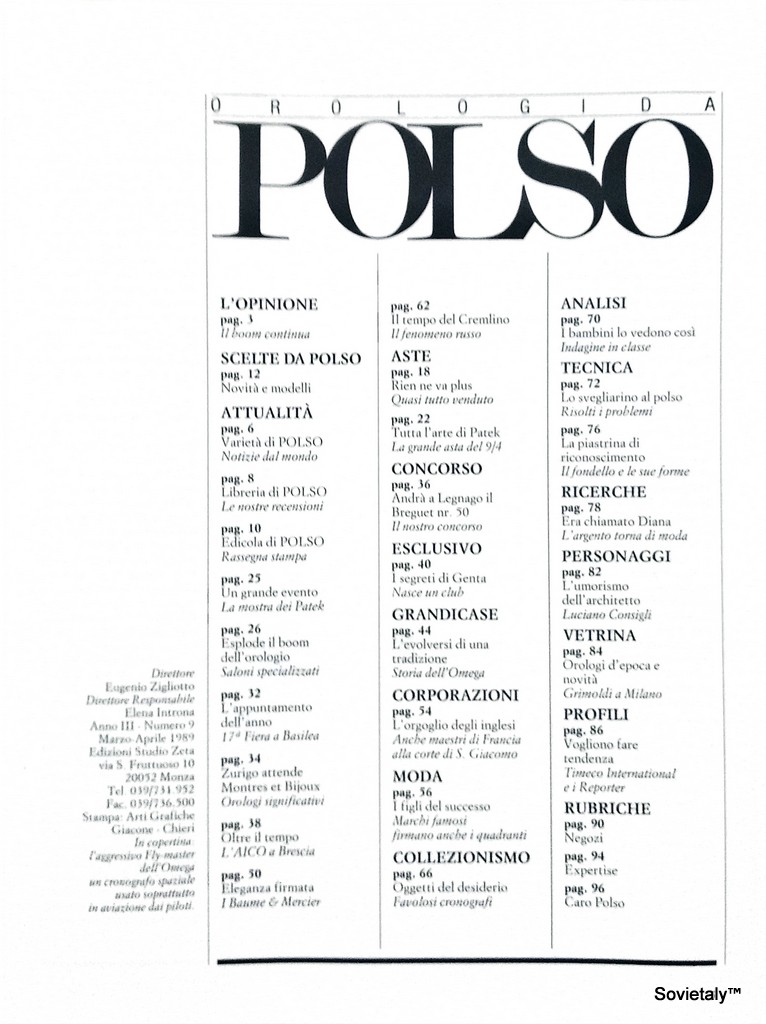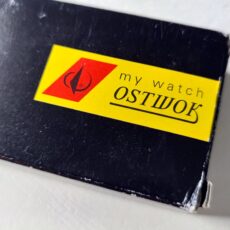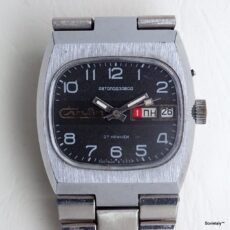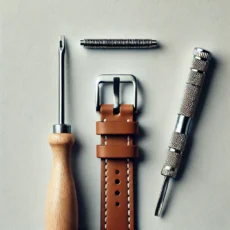Recently, I had the opportunity to delve into a vintage watch magazine from the late 1980s. The issue in question is “Orologi da Polso,” Year III – No. 9, dating back to March-April 1989, published by Edizioni Studio Zeta of Monza. Among the various articles, one particularly intriguing piece explores the history and influence of vintage Soviet watches from the 1980s and their connections with European countries, including Italy. Below, I present a detailed overview of the article, providing insights into the state of the watch industry during that era, enriched with additional context and information for a comprehensive understanding.
The Soviet Watchmaking Phenomenon
The article begins by highlighting a significant historical context: the Soviet Congress of 1925 aimed for economic self-sufficiency, transitioning from an importer to a producer nation. It was unimaginable a few years prior that vintage Soviet watches from the 1980s would become fashionable, almost a cultural phenomenon.
Russian horology boasts an illustrious history. The Kremlin’s tower clocks, constructed in the early 15th century by Lazar Serbin, and the carillons of the Saviour Tower, restored in the 19th century by the Butenop brothers, are notable examples. Under Tsar Peter the Great, famous French artisans were invited, fostering a watchmaking school in Russia, despite French artisans enjoying greater privileges.
Notable Russian Watchmakers and Collections
The article further mentions Ivan Kulihin, a renowned watchmaker from the 18th century, whose exquisite pieces are housed in the Hermitage Museum in Leningrad and various museums in Moscow. An exhibition in Florence showcased magnificent pieces from the Romanoff collections, revealing the craftsmanship of the Bronnikov family, known for their wooden clocks, and the contributions of watchmakers like Tolstoy and Nosov to mechanical advancements.
The Soviet Watch Industry’s Evolution
Before the October Revolution, parts and mechanisms were imported from Switzerland for assembly in Russia. In the late 19th century, France invested in Tsarist domains, and after World War I, Italy acquired Russian pocket watches, which were later issued to railway personnel.
The Soviet watch industry’s roots date back to the 1930s, evolving significantly by the 1940s, with factories converting to military production during World War II and later returning to civilian manufacturing. The principal Moscow factory, established in 1942, eventually became Vostok, one of the most prominent Soviet watch manufacturers.
Soviet Watches in the 1980s
By the 1980s, over fifteen factories in the USSR specialised in various watch productions, including well-known brands like Chaika, Poljot, Zaria, Paketa, Slava, and Penza. The 1950s marked the beginning of exportation, primarily to Warsaw Pact nations. The article discusses the romantic history of the Mark watch, resembling the Poljot, and its connection to an Italian family.
Italian-Soviet Collaborations and Market Impact
The first significant import of Soviet watches to Italy occurred in the late 1980s, spearheaded by Orazio Occhipinti of Mirabilia di Milano, who distributed Paketa watches. These vintage Soviet watches from the 1980s, known as “raketa” in Russian, saw a surge in popularity, influenced by Gorbachev’s policies and an increasing openness towards Soviet products.
At the Vicenza fair, Mirabilia also presented Poljot watches, featuring mechanical movements and shock-resistant cases. The Vostok brand offered models tailored for different military branches, with manual winding, water resistance up to 10 atmospheres, and luminous hands and indices.
Additionally, Italian-designed watches with Russian mechanisms emerged, like the Soviet, combining Russian quartz movements with Italian aesthetics. The Elmitex company introduced the Perestroika collection, a blend of quartz and mechanical chronographs, at both the Vicenza and Moscow fairs.
Conclusion
This 1989 issue of “Orologi da Polso” provides a fascinating snapshot of Soviet watchmaking during a transformative period. It reflects the blend of historical craftsmanship and modern industrial capabilities, highlighting the Soviet Union’s impact on the global watch market. The Italian perspective, with insights from key figures like Jacopo Marchi and collaborations with Soviet manufacturers, underscores the cross-cultural influences that shaped the horological landscape of the late 20th century.
For further reading, I encourage exploring the complete article and the magazine scans, offering a deeper dive into this captivating era of watchmaking history.

